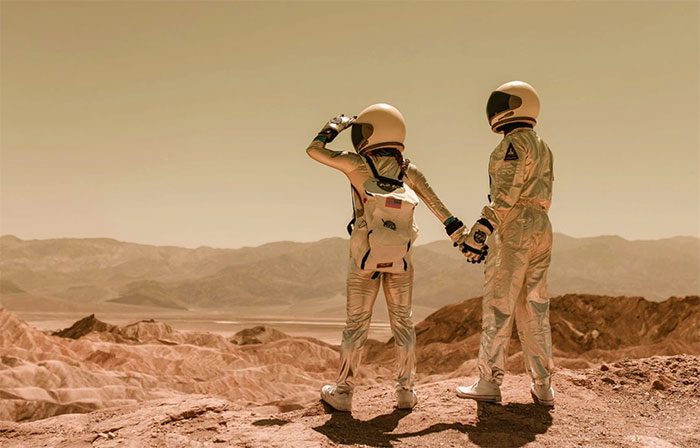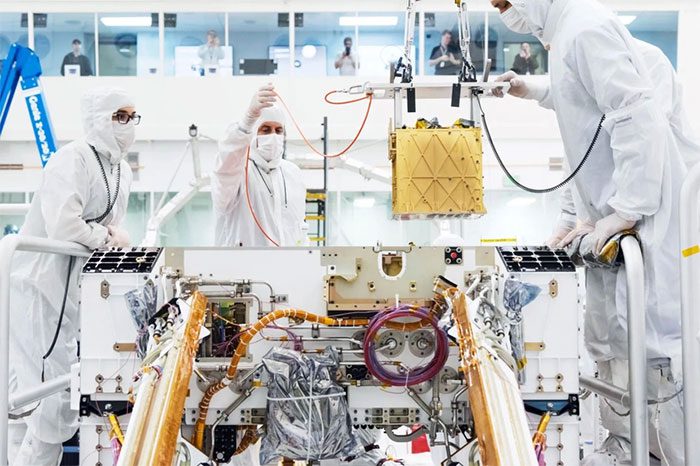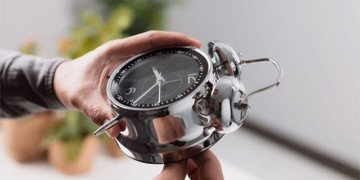Humans would suffocate if they breathed on Mars without wearing a spacesuit; however, everything could change in the future thanks to NASA’s oxygen production technology.
Like on Earth, humans need water, food, shelter, and oxygen to survive if they set foot on Mars. Plants and certain bacteria produce oxygen for us to breathe. In fact, the oxygen component in the atmosphere makes up only 21%, while the majority is nitrogen at 78%. However, fundamentally, the human body does not require nitrogen, so it does not absorb this gas.
Meanwhile, the atmosphere on Mars is extremely thin, with a volume of only 1% of Earth’s atmosphere. In other words, the amount of air on the “Red Planet” is less than 99% compared to Earth. One reason for this is that Mars is only half the size of Earth, and its gravitational force is not strong enough to retain the atmosphere from escaping into space.
Oxygen is almost nonexistent on Mars
For humans, carbon dioxide (CO2) is highly toxic when inhaled at high concentrations. While CO2 makes up less than 1% of Earth’s atmosphere, this gas accounts for 96% of the air on Mars.

Humans would die instantly if they breathed on Mars without wearing a spacesuit. (Illustration: Little Astronomy).
Meanwhile, oxygen is almost nonexistent on Mars, comprising only 0.13% of the atmosphere, which is far too little for humans to survive. If one were to breathe without a spacesuit providing oxygen, they would immediately suffocate, and blood would boil due to the low atmospheric pressure.
So far, researchers have yet to find evidence of life on Mars. Surveys and robotic explorations have only taken place in recent years.
Although we cannot be certain about the existence of life, we all know that Mars is very harsh, with scarce water, and nighttime temperatures can drop to -73 degrees Celsius. However, some organisms on Earth can survive in extreme environments, as life has been found in Antarctica, the ocean floor, and several kilometers deep beneath the Earth’s surface.
According to The Next Web, these areas are either extremely hot or cold, with almost no water and very little, if any, oxygen.
Even though life no longer exists on Mars, it is likely that life appeared billions of years ago when the planet had a thicker atmosphere, more oxygen, warmer temperatures, and higher amounts of liquid water.

The Perseverance rover used in the Mars exploration mission. (Image: NASA).
This is one of the goals of the National Aeronautics and Space Administration (NASA) to find signs of ancient Martian life. The Perseverance rover is searching for and analyzing rock samples on Mars to identify fossils of organisms that once lived on the planet.
Oxygen-producing device on Mars
Among the seven instruments on Perseverance, there is one system expected to help humans breathe more comfortably on Mars. This is the MOXIE (Mars Oxygen In-Situ Resource Utilization Experiment), a system that absorbs CO2 from the atmosphere, processes it into oxygen, and distributes it like a plant. This is the first time a device has been able to produce oxygen on another planet.
The amount of oxygen produced in each operation of MOXIE is enough for a human to breathe for 10-15 minutes. While not much, NASA engineers hope to develop MOXIE into an automated system to produce oxygen for astronauts and use it as rocket fuel for the journey back to Earth.
According to NASA, a four-person crew needs about 1.5 tons of oxygen to breathe for one year. However, about 25 tons of oxygen would be required to launch a rocket with a 7-ton fuel tank. Instead of transporting 25 tons of fuel from Earth, engineers only need to send a 1-ton version of MOXIE to produce oxygen during astronauts’ missions.

With the size of a car battery, MOXIE can absorb CO2 and distribute oxygen on Mars. (Image: NASA).
Not only does it support astronauts, but the oxygen-producing machine on Mars could also benefit future space tourism. However, even with self-produced oxygen, astronauts still need to wear spacesuits to protect against other dangers.
NASA is researching new technologies to send humans to Mars. This could happen in the coming decades, providing an opportunity for humans to live on a planet beyond Earth. According to NASA, the current version of MOXIE is the size of a car battery, but to support human missions, it must be 100 times larger.





















































